<< Our Photo Pages >> Teotihuacan - Ancient Village or Settlement in Mexico
Submitted by bat400 on Thursday, 01 March 2012 Page Views: 12383
Multi-periodSite Name: TeotihuacanCountry: Mexico
NOTE: This site is 0.119 km away from the location you searched for.
Type: Ancient Village or Settlement
Nearest Town: Mexico City
Latitude: 19.692500N Longitude: 98.84653W
Condition:
| 5 | Perfect |
| 4 | Almost Perfect |
| 3 | Reasonable but with some damage |
| 2 | Ruined but still recognisable as an ancient site |
| 1 | Pretty much destroyed, possibly visible as crop marks |
| 0 | No data. |
| -1 | Completely destroyed |
| 5 | Superb |
| 4 | Good |
| 3 | Ordinary |
| 2 | Not Good |
| 1 | Awful |
| 0 | No data. |
| 5 | Can be driven to, probably with disabled access |
| 4 | Short walk on a footpath |
| 3 | Requiring a bit more of a walk |
| 2 | A long walk |
| 1 | In the middle of nowhere, a nightmare to find |
| 0 | No data. |
| 5 | co-ordinates taken by GPS or official recorded co-ordinates |
| 4 | co-ordinates scaled from a detailed map |
| 3 | co-ordinates scaled from a bad map |
| 2 | co-ordinates of the nearest village |
| 1 | co-ordinates of the nearest town |
| 0 | no data |
Internal Links:
External Links:
I have visited· I would like to visit
jdeblois83 would like to visit
ChrisHealey visited on 14th Sep 2014 - their rating: Cond: 3 Amb: 4 Access: 5
mfrincu visited on 30th Dec 2013 - their rating: Cond: 5 Amb: 5 Access: 5 The pyramids are some of the best preserved I've ever seen! A must. Take a local bus from Mexico City and stay there for 4-5 hours! Explore on your own.
MartinJEley visited on 6th Feb 2010 - their rating: Cond: 4 Amb: 5 Access: 5 The scale of the structures leave you in complete wonder at they must have looked like in their day. It was well worth the slow journey out of Mexico City in the heavy traffic.
Average ratings for this site from all visit loggers: Condition: 4 Ambience: 4.67 Access: 5

The culture that built it is also known as Teotihucan and may have been the single most influential culture of Mesoamerica in regards both architecture and culture. The earliest buildings date to 200 BC, but the largest structures were completed by 250 AD. Major archetectural and decorative features include square stepped pyramids with rectangualr panels on the sloping sides (talud-tablero.)
The city appears to have declined through 500-600 AD and at some time in the 7th or 8th century portions of the city were burned and sacked. The Aztecs and their allies (the Triple Alliance) discovered the massive monuments centuries later as they exerted their influence in central Mexico, but the site was never abandoned entirely at any time after its construction. The name of the city, "place of those who have the road of the gods" or alternately "place of the origin of gods" was given by these later cultures, who used it as a pilgrimage site.
A Unesco World Heritage Site.
Note: The role of cosmetics in Teotihuacan funerary rites, see the latest comment
You may be viewing yesterday's version of this page. To see the most up to date information please register for a free account.
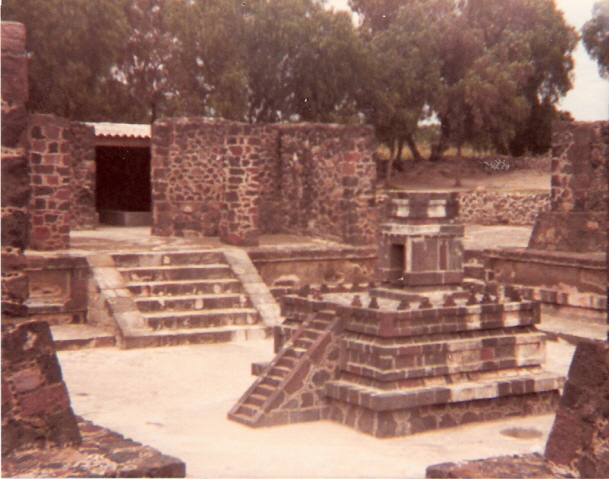
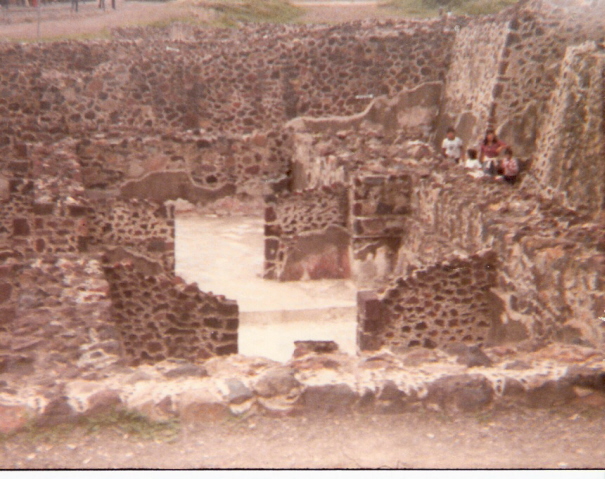

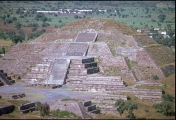
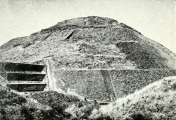
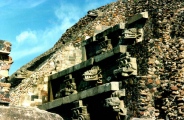
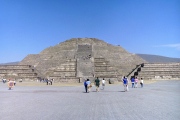
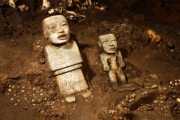
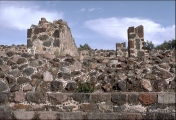


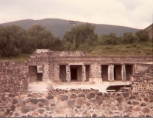


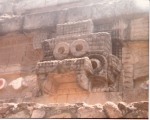
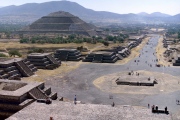
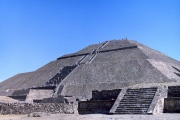
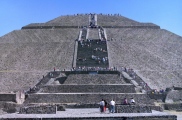
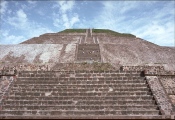

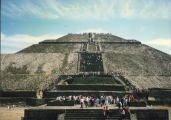
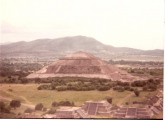
These are just the first 25 photos of Teotihuacan. If you log in with a free user account you will be able to see our entire collection.
Do not use the above information on other web sites or publications without permission of the contributor.
Click here to see more info for this site
Nearby sites
Click here to view sites on an interactive map of the areaKey: Red: member's photo, Blue: 3rd party photo, Yellow: other image, Green: no photo - please go there and take one, Grey: site destroyed
Download sites to:
KML (Google Earth)
GPX (GPS waypoints)
CSV (Garmin/Navman)
CSV (Excel)
To unlock full downloads you need to sign up as a Contributory Member. Otherwise downloads are limited to 50 sites.
Turn off the page maps and other distractions
Nearby sites listing. In the following links * = Image available
310m E 96° Teotihuacan - Pyramid of the Sun* Pyramid / Mastaba
709m W 259° Teotihuacan - Atelelco* Ancient Palace
838m NNE 18° Teotihuacan - Pyramid of the Moon* Pyramid / Mastaba
875m WSW 240° Teotihuacan - Tetitla Ancient Village or Settlement
1.2km S 181° Teotihuacan - Temple of Quetzalcoatl* Pyramid / Mastaba
21.9km S 172° Texcotzingo* Ancient Palace
33.2km ENE 66° Tepeapulco Pyramid* Pyramid / Mastaba
37.6km WSW 246° Acatitlan* Ancient Temple
38.1km WSW 242° Tenayuca* Pyramid / Mastaba
40.6km SW 229° Tlatelolco* Ancient Village or Settlement
41.4km SW 226° Tenochtitlan - Templo Mayor* Ancient Temple
46.3km SW 230° Museo Nacional de Antropología* Museum
55.8km SW 219° Cuicuilco* Pyramid / Mastaba
56.1km SW 217° Tlalpan Ancient Village or Settlement
66.1km NW 309° Tula.* Ancient Village or Settlement
69.2km NE 47° Huapalcalco Pyramid Pyramid / Mastaba
72.0km SE 134° Xochitecatl* Pyramid / Mastaba
72.5km SE 133° Cacaxtla* Ancient Village or Settlement
81.4km SSW 199° Tepoztlan* Ancient Village or Settlement
90.7km SE 141° Cholula* Pyramid / Mastaba
93.5km SSW 205° Cuernavaca - Piramide de Teopanzolco* Pyramid / Mastaba
102.0km SW 231° Teotenango* Ancient Temple
109.5km SSW 206° Xochicalco* Ancient Village or Settlement
111.3km WNW 287° Huamango Ancient Village or Settlement
113.2km S 176° Chalcatzingo* Rock Art
View more nearby sites and additional images



 We would like to know more about this location. Please feel free to add a brief description and any relevant information in your own language.
We would like to know more about this location. Please feel free to add a brief description and any relevant information in your own language. Wir möchten mehr über diese Stätte erfahren. Bitte zögern Sie nicht, eine kurze Beschreibung und relevante Informationen in Deutsch hinzuzufügen.
Wir möchten mehr über diese Stätte erfahren. Bitte zögern Sie nicht, eine kurze Beschreibung und relevante Informationen in Deutsch hinzuzufügen. Nous aimerions en savoir encore un peu sur les lieux. S'il vous plaît n'hesitez pas à ajouter une courte description et tous les renseignements pertinents dans votre propre langue.
Nous aimerions en savoir encore un peu sur les lieux. S'il vous plaît n'hesitez pas à ajouter une courte description et tous les renseignements pertinents dans votre propre langue. Quisieramos informarnos un poco más de las lugares. No dude en añadir una breve descripción y otros datos relevantes en su propio idioma.
Quisieramos informarnos un poco más de las lugares. No dude en añadir una breve descripción y otros datos relevantes en su propio idioma.